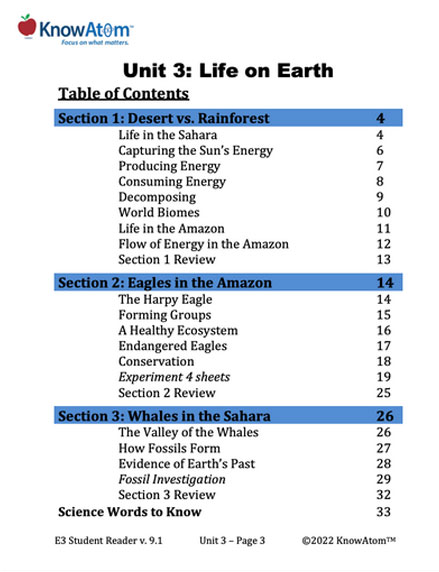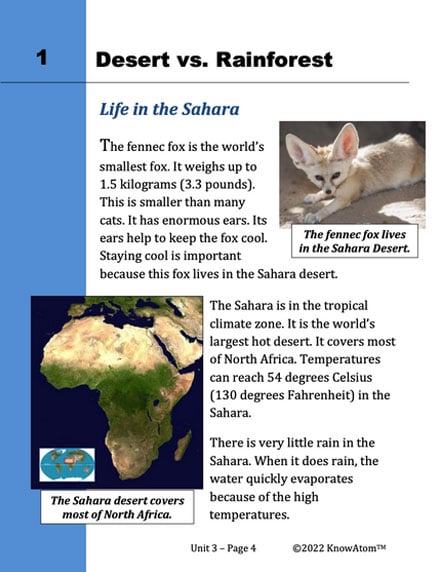Whales in the Sahara
The Valley of the Whales
More than 100 years ago, scientists in the Sahara made a surprising discovery. They found the skeleton of a whale. Whales are animals that live in the ocean. But the skeleton was clearly that of a whale. And it was buried in the sands of the desert.
Scientists now know that the Sahara hasn’t always been the world’s largest hot desert. Millions of years ago, an ocean covered what is now a desert biome.
Scientists learned about this change in part by studying fossils. Fossils can be the remains of ancient animals and plants. They can also be the traces or impressions of living things from past geologic ages, or the traces of their activities. Fossils include bones, teeth, wood, and shells. Another kind of fossil, called a trace fossil, is an imprint or evidence of a living thing left behind in rock.
Fossils tell scientists about the kinds of organisms that lived long ago. They also tell about the environment the organisms lived in.
How Fossils Form
Fossils are not easy to make. Out of the billions of creatures that have lived on Earth, only a small number have turned into fossils.
Fossils take millions of years to make. The remains of living things can become trapped in layers of rock that build up over time. These remains include whole plants and animals. They also include traces of organisms such as footprints. Over millions of years, heat and pressure turned these remains into fossils. Because of this process, the fossils in lower layers of rock are older than fossils in higher layers.






.png?width=316&height=373&name=Screenshot%20(16).png)



